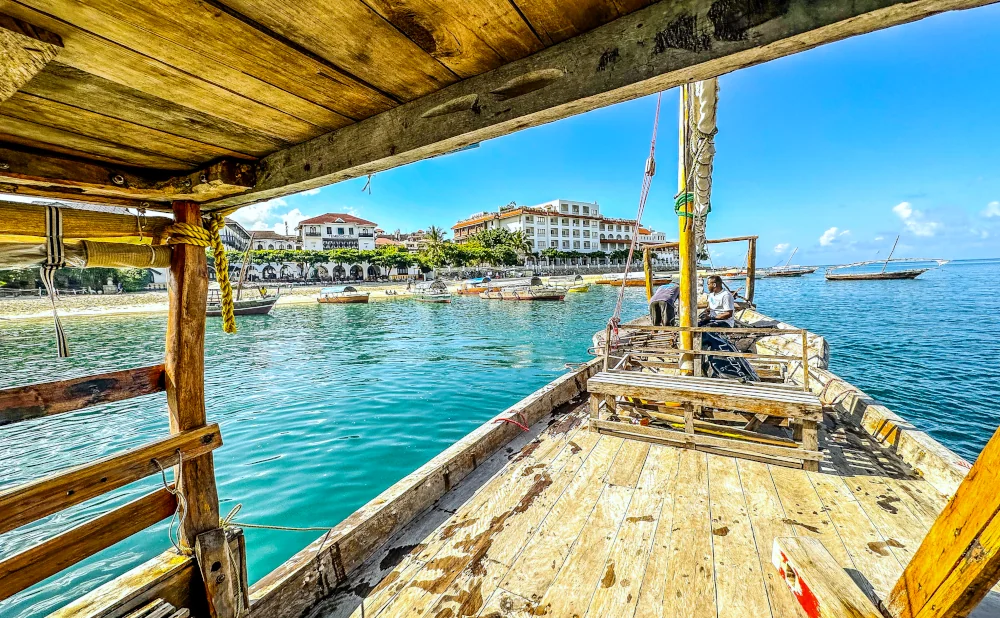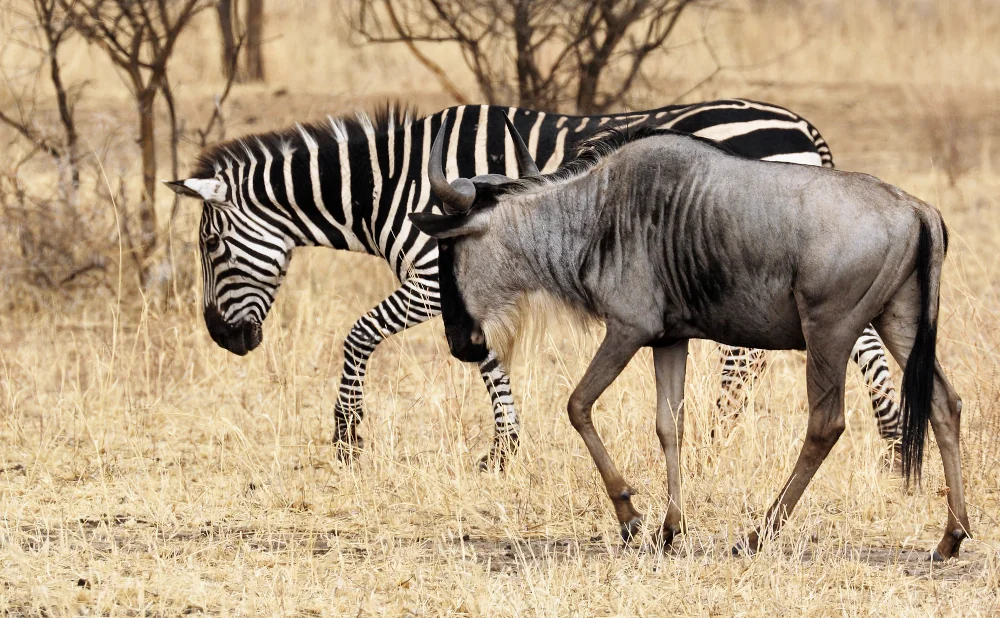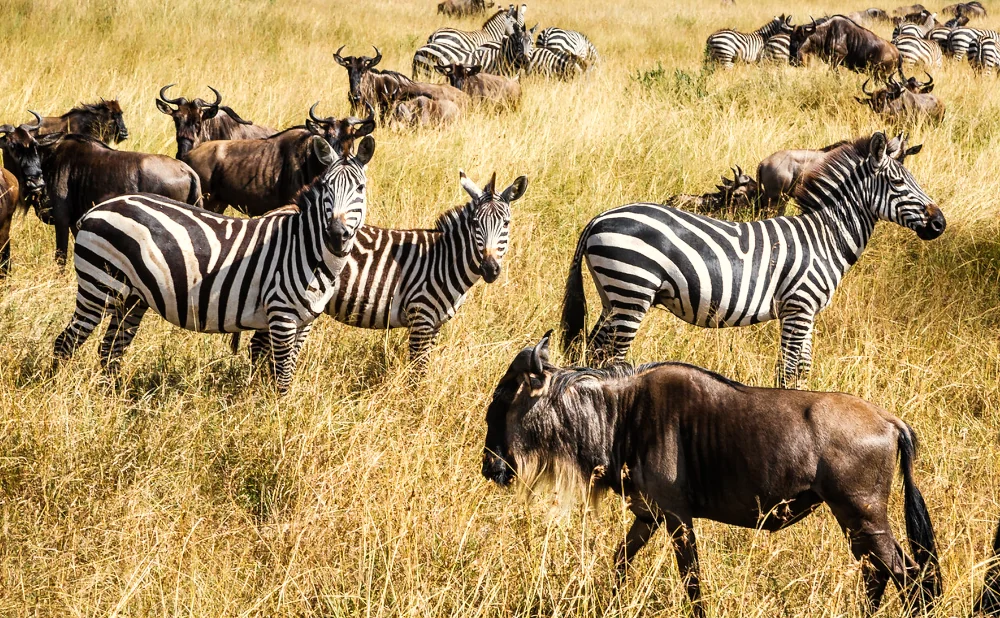Lake Manyara National Park

Lake Manyara National Park:
1. Location: Lake Manyara National Park is located in northern Tanzania, along the western escarpment of the Great Rift Valley.
2. Size: The park covers an area of approximately 330 square kilometers (127 square miles).
3. Established: It was established as a national park in 1960.
4. Elevation: The park's elevation ranges from 960 to 1,820 meters (3,150 to 5,970 feet) above sea level.
5. Lake Manyara: The park is named after the lake, Lake Manyara, which is a shallow, alkaline lake covering about 200 square kilometers (77 square miles) when full.
6. Tree-Climbing Lions: Lake Manyara is famous for its tree-climbing lions, a rare behavior among lions observed within the park.
7. Elephants: The park is home to large herds of elephants, often seen grazing and foraging.
8. Bird Species: Over 400 bird species have been recorded in the park, including flamingos, pelicans, and eagles.
9. Flamingos:The lake is often frequented by thousands of flamingos, particularly during the wet season.
10. Giraffes: Giraffes are a common sight, browsing on the park’s acacia trees.
11. Buffaloes:The park supports significant populations of African buffalo.
12. Antelope Species:Several antelope species inhabit the park, including impalas, grants gazelles, and waterbucks.
13. Forest Ecosystem: The park features a variety of ecosystems, including dense groundwater forests, open grasslands, and swamps.
14. Baobab Trees: The park is dotted with iconic baobab trees, known for their distinctive shape and size.
15. Swamps: Seasonal swamps in the park provide critical water sources for wildlife.
16. Rainfall:The park receives an average annual rainfall of 600 to 1,200 millimeters (24 to 47 inches).
17. Climate: The climate is typically tropical, with a hot and humid rainy season and a cooler dry season.
18. Viewing Areas: Key viewing areas include the Lake Manyara Viewpoint and the park’s southern plains.
19. Guided Tours: The park offers both game drives and walking safaris with professional guides.
20. Camping: There are designated campsites within the park for visitors who want to experience a more immersive safari.
21. Conservation Efforts: The park plays a role in conservation efforts for various endangered species.
22. Accessibility: It is accessible from the town of Mto wa Mbu, located about 126 kilometers (78 miles) from Arusha.
23. Cultural Significance: The park is situated near several Maasai villages, and local Maasai culture can be explored.
24. Safari Activities: In addition to game drives, visitors can enjoy bird watching, photography, and nature walks.
25. Park Headquarters:The park headquarters is located at Mto wa Mbu, which serves as a gateway for visitors.
26. Climate Variability: The climate varies significantly between the lake shore and the higher escarpment areas.
27. Unique Wildlife:The park supports a range of unique wildlife, including the rare black rhino occasionally spotted.
28. Vegetation: Vegetation varies from lush forest to open savannah, providing diverse habitats for wildlife.
29. Waterfowl: Besides flamingos, the park is home to various waterfowl species, including ducks and waders.
30. Giraffe Behavior: Giraffes are often seen feeding on the park's acacia trees, reaching high branches with their long necks.
31. Primate Species: The park is home to several primate species, including baboons and blue monkeys.
32. Reptiles: Various reptile species inhabit the park, including Nile crocodiles in the lake and numerous lizards.
33. Migration Patterns: While not part of the Great Migration route, the park still experiences seasonal movements of various species.
Night Drives: Night game drives are occasionally offered, providing opportunities to see nocturnal wildlife.
35. Geological Features: The park features significant geological features related to the Great Rift Valley.
36. Tourism Impact: Tourism is carefully managed to minimize environmental impact and support local conservation efforts.
37. Visitor Numbers: The park attracts thousands of visitors annually, contributing to Tanzania’s tourism industry.
38. Local Economy: The presence of the park supports the local economy through tourism-related activities.
39. Research Opportunities: The park is a site for ongoing ecological and wildlife research.
40. **Wildlife Protection:** Anti-poaching measures are in place to protect the park's diverse wildlife.
41. Park Regulations: Visitors must adhere to park regulations to ensure the safety of both wildlife and themselves.
42.Sunset Views: The park offers spectacular sunset views over the lake and surrounding landscapes.
43. Scenic Drives: The park’s road network provides scenic drives with opportunities to view various habitats and wildlife.
44. Park Size Variation: The lake's size varies significantly with seasonal changes, affecting wildlife distribution.
45. Ecotourism: The park promotes ecotourism initiatives that emphasize environmental sustainability.
46. Health Precautions: Visitors are advised to take malaria precautions when traveling to the park.
47. Wildlife Photography: The park is a popular destination for wildlife photographers due to its diverse animal species and landscapes.
48. Seasonal Variation: Wildlife viewing can vary based on seasonal changes, with the dry season offering clearer sightings.
49. Visitor Experience: The park provides a range of visitor experiences, from luxury lodges to more rustic camping options.
50. Educational Programs: Educational programs are available to enhance visitor understanding of the park's ecology and conservation efforts.










